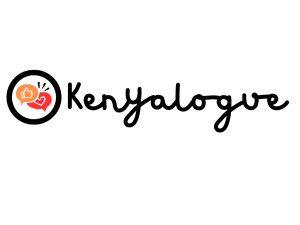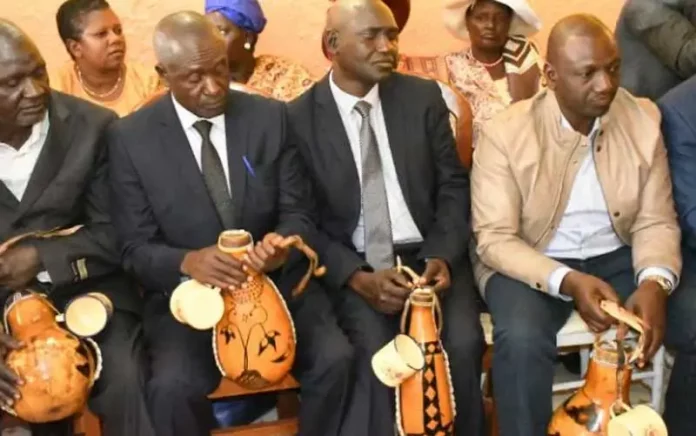For the Kalenjin people, marriage is not just a union of two people, it is a binding of two families.
And that is where the ‘Koito’ (dowry payment) process comes in.
Kalenjin ‘Koito’ involves a cascade of events from a series of negotiations, gift exchanges, and feasting that culminates in a grand celebration of love and family.
So, if you just decided to marry a Kalenjin, this guide has everything that you need to know about ‘Koito’ (dowry payment process).
Kalenjin ‘Koito’ at a Glance: What to Expect
The Kalenjin people practice mixed farming.
Aside from growing crops, they also keep cattle, sheep, and goats.
As such, you should expect to pay dowry in a process that typically involves the exchange of cattle.
In Kalenjin, cattle are highly valued and are considered a sign of wealth and prosperity.
However, in recent times, some families have started accepting cash or other forms of payment, depending on their personal preferences.
The Dowry Payment Process
The dowry payment process, “koito”, in the Kalenjin community involves a series of negotiations between the two families.
The groom’s family must approach the bride’s family with a formal request for her hand in marriage.
Such a request is usually done through the services of a mediator, who is known as “Kamuriet” in the Kalenjin language.
Sometimes, he is called ‘Kiyagin’ or messenger.
‘Kimuriet/Kiyagin’ is an elderly man with vast knowledge of the communities culture. He must also be a master of good communication and negotiation skills.
What the ‘Kiyagin’ (Messenger) Does
The ‘kamuriet/Kiyagin’ (messenger) acts as an intermediary between the two families and facilitates the negotiations for the bride’s hand in marriage.
They are highly respected and are seen as key players in the success of the dowry payment process.
‘Makibire kiyagin’ is an old Kalenjin saying that means “A messenger is not to be punished’. (Learn other Kalenjin sayings here).
So, no matter the nature of the tidings that a ‘Kiyagin’ (Messenger) delivers, the bride’s family must not threaten him whether they like what he delivers or not.
Considering the Proposal
Once the groom’s family has made their formal request, the bride’s family will take some time to consider the proposal before responding.
If they accept the proposal, they will then invite the groom’s family to their homestead for a formal introduction ceremony, known as ‘Kiborgei’ (to show up).
Koito’ Negotiation (Dowry Negotiation)

‘Koito’ negotiation is a significant event that involves the formal introduction of the two families and the exchange of greetings.
The dowry negotiation process will then kick off.
The two families will sit down and discuss the number of cattle that will be exchanged as part of the dowry payment.
The number of cattle that are required will vary depending on various factors, such as the bride’s age, education, and social standing.
The details of dowry payment in Kalenjin are as follows:
- Teta Ne Abai– A cow under lactation
- Aito- A bull
- Teta Ne Bo Riotet– A cow near conception
- Roriat- A heifer
- Teta Ne Iyumi Nego/Iywoget– A mature cow
- Kwesta– He goat. Given to the bride’s father
- Kechiryet- A sheep. Given to the bride’s mother
- Chepng’abait- Upkeep appreciation
- Kechiryet Nebo Arwet– Given to the bride’s mother to allow the man to call her ‘Boger’ (Mother-in-law). A goat or a lamp may also be given to allow the bride-groom to call her ‘Bogine’ (Mother-in-law still)
- Mwaita- For the father lump. It can be in form of money as a token of appreciation.
Once an agreement has been reached on the number of cattle that will be exchanged, the groom’s family will be given time to raise the required number of cattle.
This can take anywhere from a few months to several years, depending on the number of cattle that are required.
Note that the above dowry can be valued and paid in form of cash.
Modernity has taken its toll on almost every bit of culture.
Kalenjin community seems to be successful in adapting to this form of dowry payment.
Paying the Dowry
Once the groom’s family has raised the required number of cattle, they will then take them to the bride’s family’s homestead for a ceremony known ‘Keget tuga’ (to lead cattle).
Usually, the elders instruct the bridegroom to start this off by literally striking a cow in the back using a herdsmen stick.
It is done in the presence of a handful of elders from both families.
The cattle will then be presented to the bride’s family as a sign of the groom’s commitment to taking care of the bride and her family.
There is a small feast to seal the agreement.
Traditionally, such feasting is occasioned by taking beer.
The elders from the bride’s family will then lead the cattle away.
Additional Gifts
In addition to the cattle, the groom’s family can also provide other gifts, such as blankets, clothes, and jewelry for the bride.
This is a sign of respect and affection for the bride.
Additionally, it also serves as a way of showing appreciation for the bride’s family’s acceptance of the proposal and for taking care of the bride; raising her according to the moral standards of the community.
Closing Thoughts
The Kalenjin dowry payment process is a significant cultural practice that serves as a way of binding two families together in a lifelong union of love and respect.
It involves a series of negotiations and ceremonies, which are all geared toward strengthening the bond between the two families.
‘Koito’ plays a central role in Kalenjin marriages.
While the process may seem lengthy and tedious, it is highly respected and revered.
Recommended For You:



